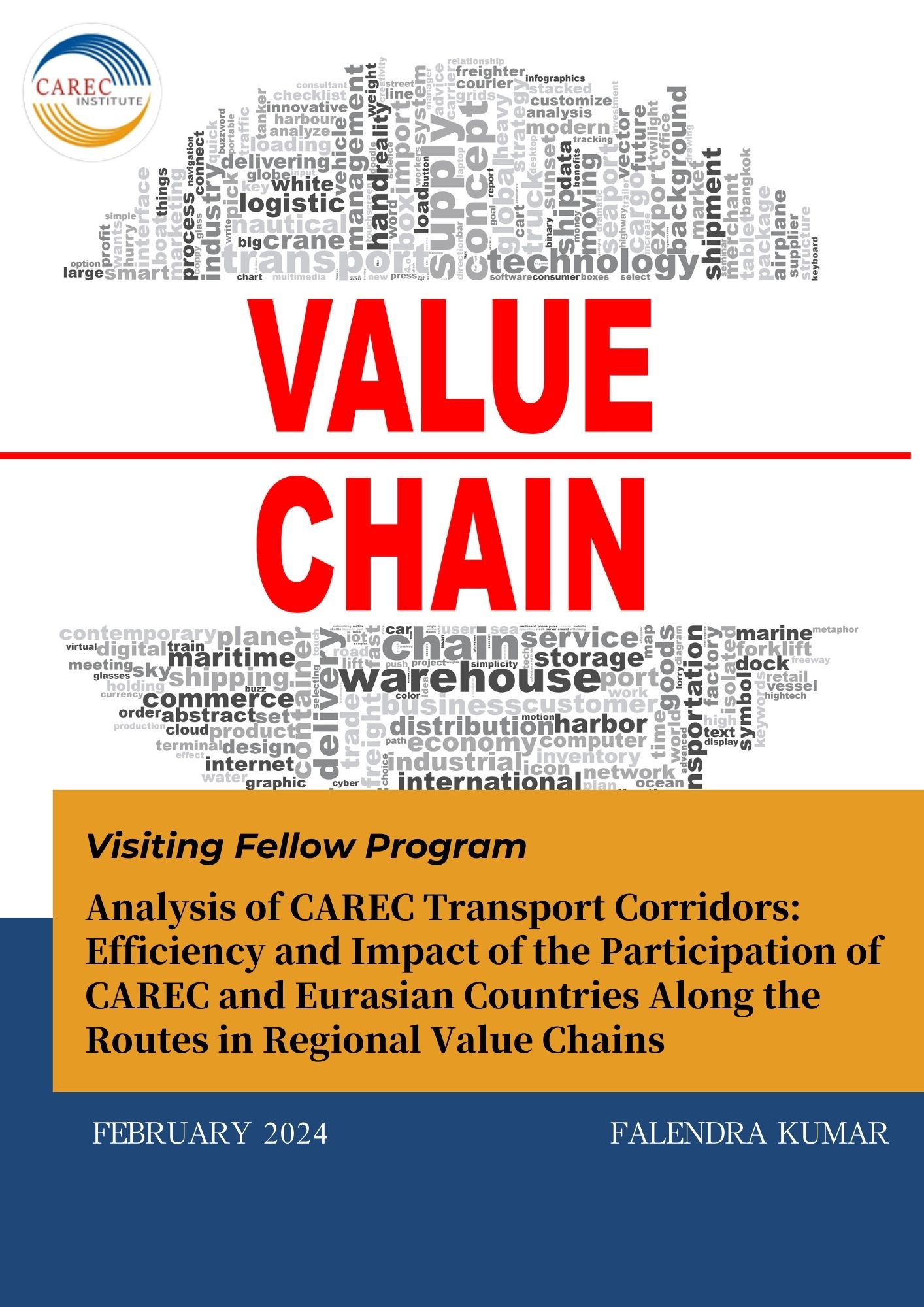Visiting Fellow Paper: Analysis of CAREC Transport Corridors -- Efficiency and Impact of the Participation of CAREC and Eurasian Countries Along the Routes in Regional Value Chains
CAREC Institute Visiting Fellow Program paper “Analysis of CAREC Transport Corridors: Efficiency and Impact of the Participation of CAREC and Eurasian Countries Along the Routes in Regional Value Chains,” authored by Falendra Kumar, analyzes the comparative efficiency of the CAREC transport corridors and their impact on the participation of the CAREC and Eurasian countries along routes in regional value chains (RVCs), and further explores the barriers and challenges to participation in RVCs in the CAREC region.
The study reveals that only CAREC Corridor 4 demonstrated efficiency over 2010 to 2020, while CAREC Corridors 1 and 5 exhibited consistent performance during 2010 to 2015. However, CAREC Corridors 3 and 6 were less efficient than the most efficient CAREC Corridor 4. Despite this, CAREC Corridors 3 and 6 displayed an increasing return to scale over 2010 to 2020, indicating that a proportionate rise in all inputs led to a greater proportionate increase in output. All the corridors can reorient their transit infrastructure through vigorous reforms and can learn significantly from the existing transit facilitation being carried out in CAREC Corridor 4.
Empirical results underline the constructive impact of CAREC corridors on the participation in RVCs of countries along designated routes and underscore the multifaceted interplay of factors shaping the participation of CAREC corridor countries in RVCs. The CAREC transport corridor organizations must downsize operational costs to enhance the value of facilities provided by the corridors and realize the necessary valuable progress of functioning corridor efficiency by lowering transport costs and travel time. With lower trade transit costs, the CAREC transport corridors can be transformed into economic corridors to tap the novel trade opportunities that have emerged in the Eurasian countries. This requires CAREC economies to renovate manufacturing methods and acquire suitable export and investment opportunities.
